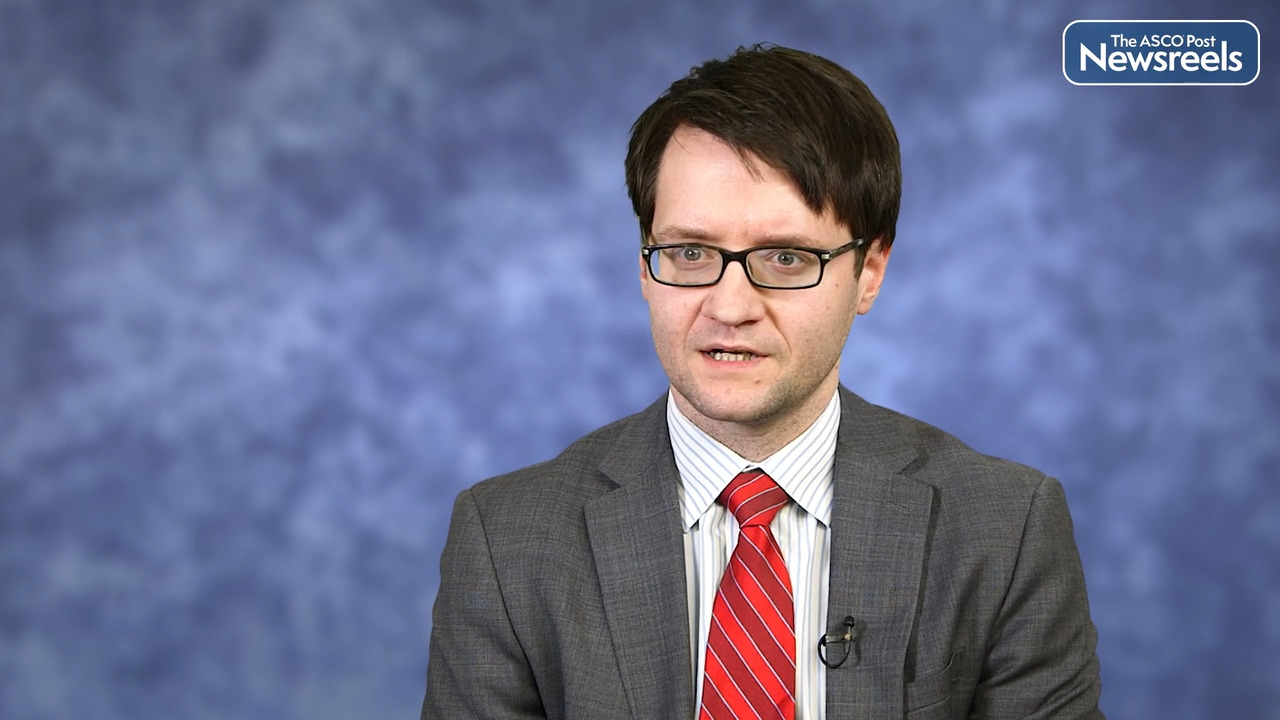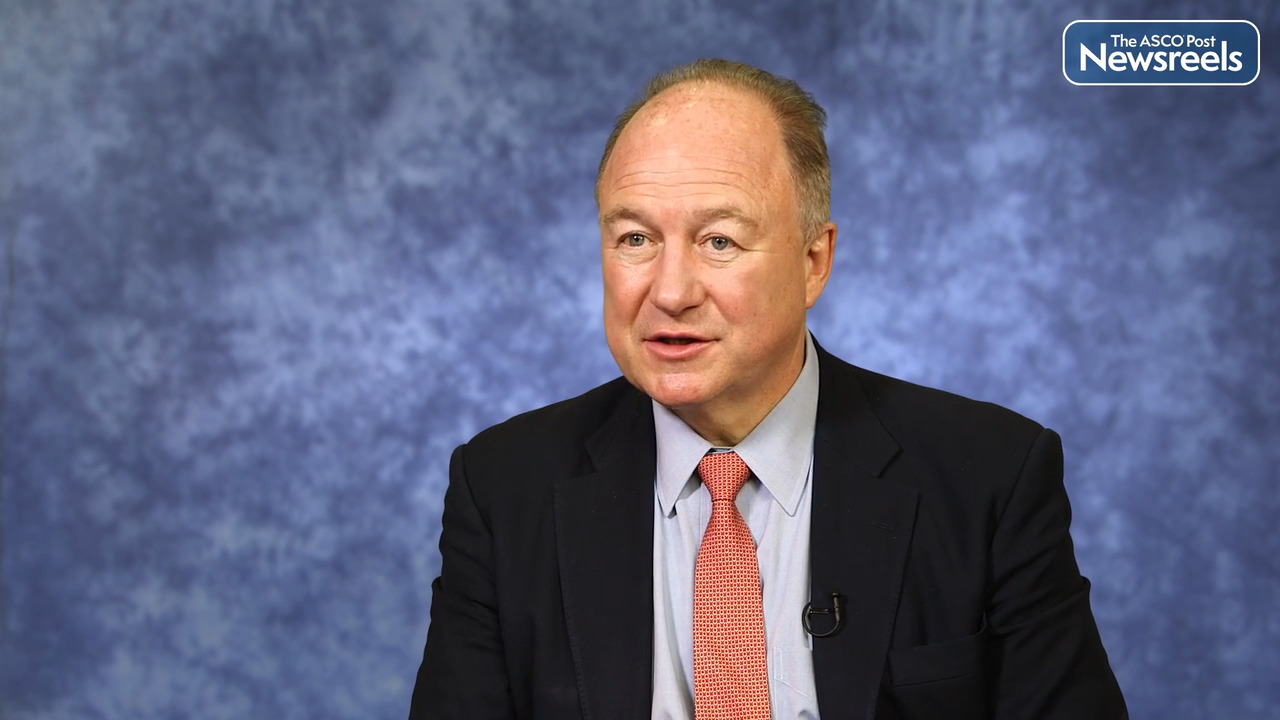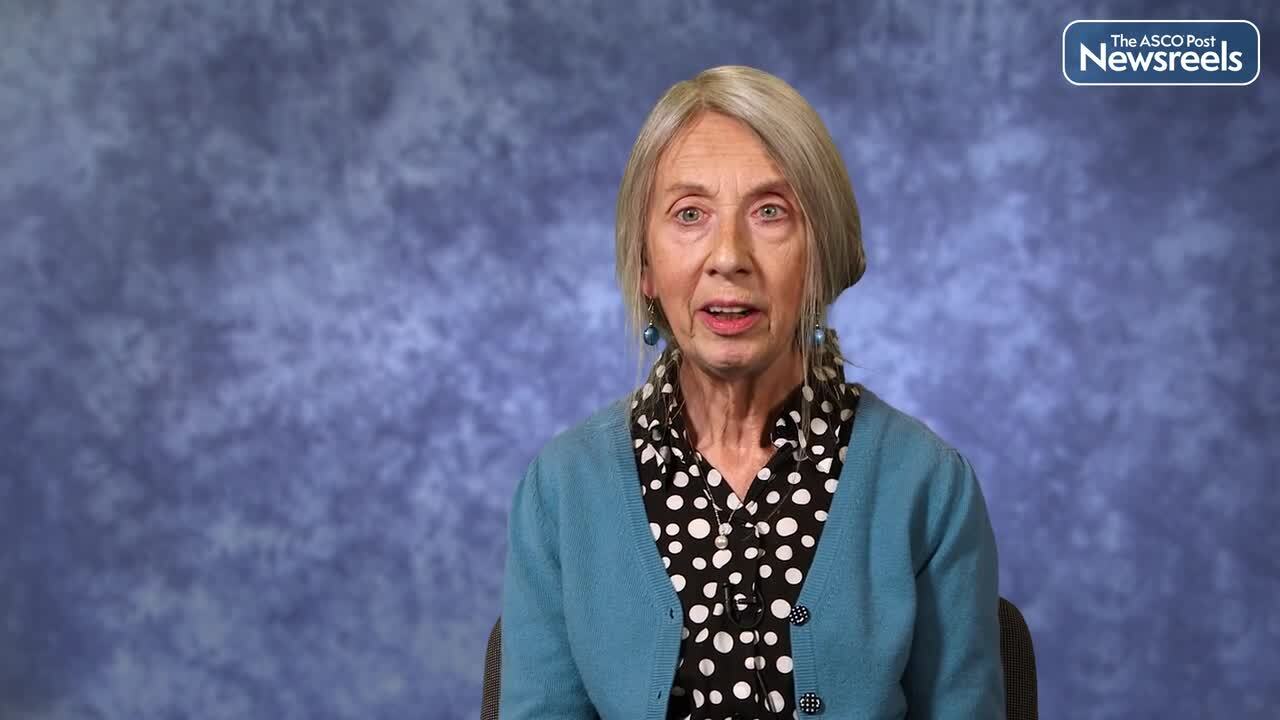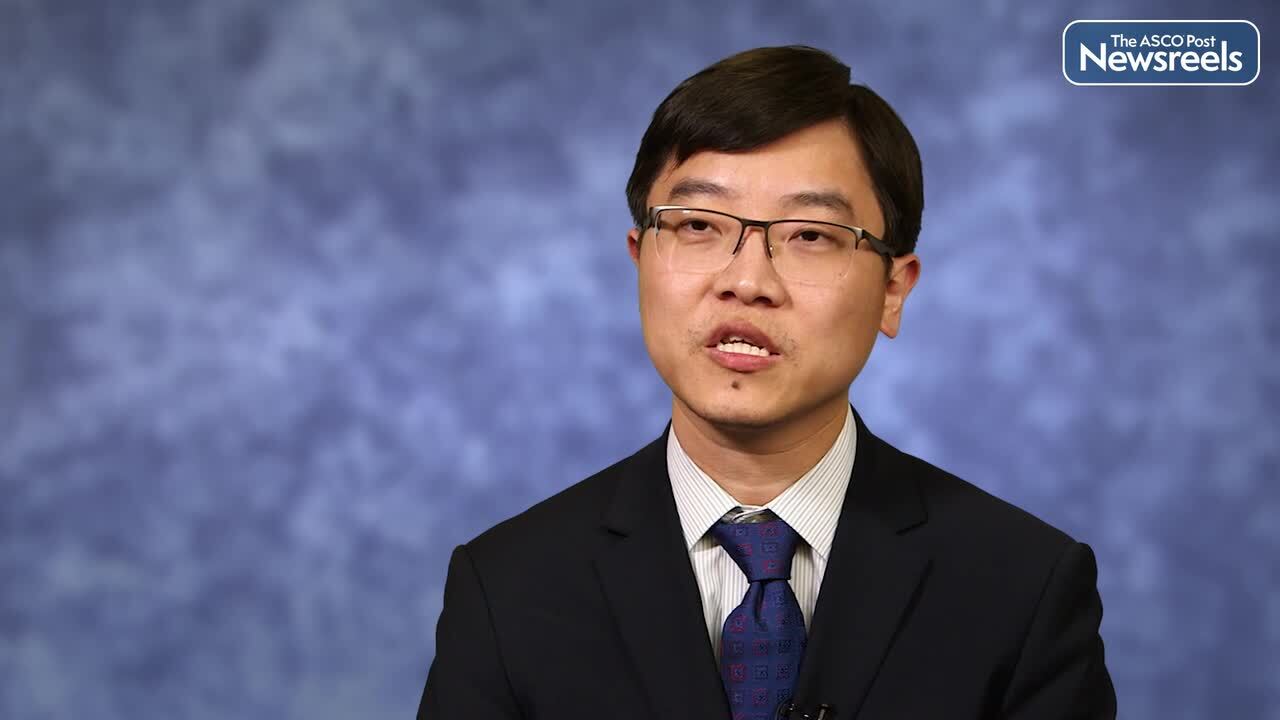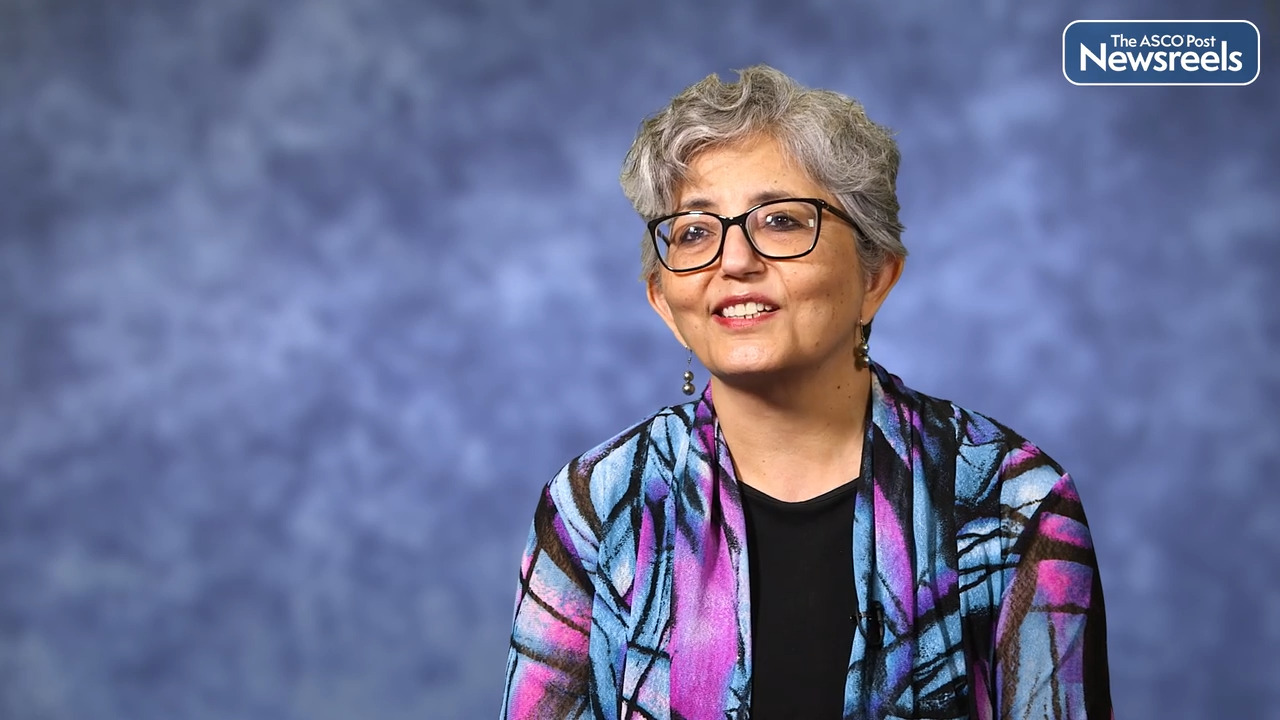Eileen M. Boyle, MD, PhD, on Multiple Myeloma: Sustained MRD Negativity in Newly Diagnosed Disease Treated with Immunotherapy Regimens
2022 ASH Annual Meeting and Exposition
Eileen M. Boyle, MD, PhD, of the Perlmutter Cancer Center, NYU Langone Health, discusses Fc-mediated antibody effector function, inflammation resolution, and oligoclonality and their role in predicting sustained measurable residual disease negativity in patients with newly diagnosed multiple myeloma who were treated with immunotherapy regimens. For the first time, an analysis of T-cell receptors shows that oligoclonal profiles seen on treatment may influence the fitness of the immune response (Abstract 100).
Transcript
Disclaimer: This video transcript has not been proofread or edited and may contain errors.
In our study, we attempted to deconvolute the microenvironment of multiple myeloma patients in order to understand what were the determinants of response. Because as you know, there's 30% of patients that will not respond or will not achieve MRD negativity upfront in myeloma. So in order to do that, we performed single-cell analysis on 20 patients, both at diagnosis and after eight cycles of treatment, to try and understand what happened to the immune composition of that environment over time.
And we were able to identify different cellular components that will determine how the patient is going to respond. And we were particularly interested in three subtypes of cells: NK cells, monocytes and T-cells. What we saw, it was that the microenvironment was function both of time and the degree of response in the disease. And so we were able to see that, upfront, NK cells were significantly higher in good responders.
These NK cells produced interferon gamma and were associated with activated monocytes that had evidence of interferon gamma response. Similarly, we noticed that T-cells that were highly diverse in these patients. But after eight cycles of treatment, these NK cells and monocytes changed in phenotype, disappeared in some cases, and the TCE repertoire became less diverse.
In patients that did not achieve MRD negativity, on the other hand, what we saw was there were some [inaudible 00:01:51] there, but they did not display that interfering gamma signature. And the monocytes that were associated with them were in this regulatory calm phase, and the T-cell repertoire was not very diverse. But after eight cycles of treatment, changes did appear, and we did notice that the monocytes attempted to display some evidence of interferon activation, suggesting there was still a chronic antigen stimulations. T-cells were more diverse, suggesting that we did have a microenvironment, after eight cycles of treatment, that could be potentially manipulated in order to improve the depth of response in these poor responders early on.
What we need to do with this data is, of course, validate it and use it in order to build better both diagnostic markers early on and potential therapeutic implications that we can use at these cells and manipulate the microenvironment to increase the depth of response in these patients.
Related Videos
The ASCO Post Staff
Andrew Matthews, MD, of the Abramson Cancer Center, University of Pennsylvania, discusses findings from a large, multicenter study that showed superior outcomes with 7 + 3 chemotherapy (cytarabine continuously for 7 days, along with short infusions of an anthracycline on each of the first 3 days) vs venetoclax in patients with acute myeloid leukemia (AML). In this real-world data set, the 7 + 3 cohort outperformed historical benchmarks in overall survival and early mortality, perhaps reflecting improved later lines of therapy and patient selection. Prospective studies (such as NCT04801797) must confirm the superiority of intensive chemotherapy (Abstract 426).
The ASCO Post Staff
Paul G. Richardson, MD, of the Dana-Farber Cancer Institute, discusses preliminary results from the dose-expansion phase of the CC-92480-MM-001 Trial, which showed promising efficacy in patients with relapsed and refractory multiple myeloma, including those with prior BCMA-targeted therapies. Patients in these two groups had an overall response rate of 40% and 50%, respectively. The results support the development of mezigdomide, currently being evaluated in combination with standard therapies in multiple myeloma as part of a large, ongoing phase I/II trial (NCT03989414) and planned phase III studies (Abstract 568).
The ASCO Post Staff
Irene Roberts, MD, of Oxford’s Weatherall Institute of Molecular Medicine, discusses children with Down syndrome, who have a more than 100-fold increased risk of developing acute myeloid leukemia before their fourth birthday compared to children without Down syndrome. Their risk of acute lymphoblastic leukemia is also increased by around 30-fold. Dr. Roberts details current knowledge about the biologic and molecular basis of this relationship between leukemia and Down syndrome, the role of trisomy 21 in leukemogenesis, and the clinical implications of these findings.
The ASCO Post Staff
Jiye Liu, PhD, of Dana-Farber Cancer Institute, discusses study findings that demonstrate KDM6A regulates CD38 and CD48 expression in multiple myeloma. Dr. Liu’s team validated combination treatment with an FDA-approved EZH2 inhibitor plus daratumumab, which can overcome daratumumab resistance in preclinical multiple myeloma models, providing the rationale for combination clinical trials to improve patient outcome (Abstract 148).
The ASCO Post Staff
Smita Bhatia, MD, MPH, of the Institute for Cancer Outcomes and Survivorship, University of Alabama at Birmingham, discusses study findings that showed key somatic mutations in the peripheral blood stem cell product increases the risk of developing therapy-related myeloid neoplasms (Abstract 119).
